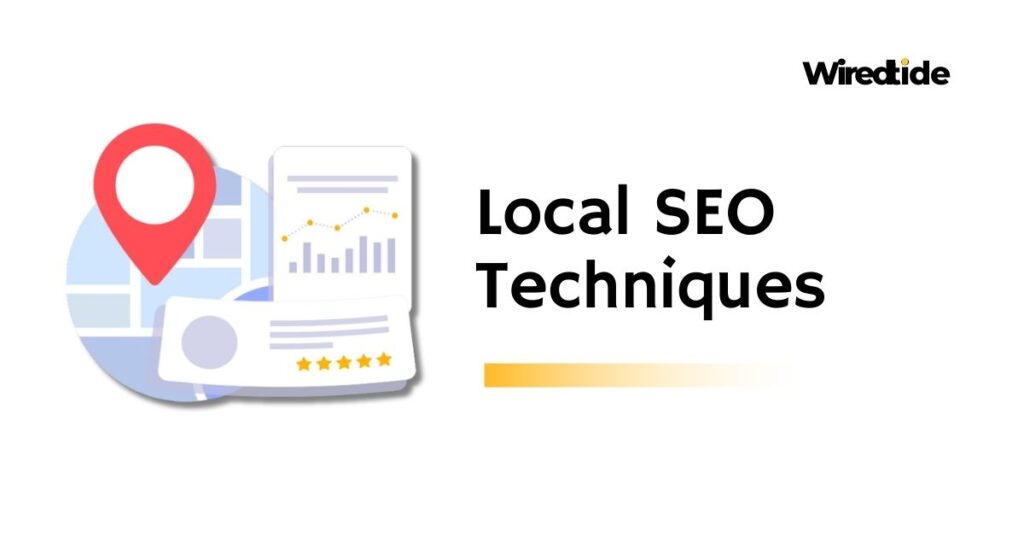Local SEO optimization is crucial for businesses that want to attract customers from their local area. By optimizing your online presence, you can improve your visibility in local search results, drive more foot traffic to your physical location, and increase your overall business success.
What is Local SEO?
Local SEO, or Local Search Engine Optimization, is a digital marketing strategy focused on optimizing a business’s online presence to attract more local customers through search engines. Unlike traditional SEO, which aims to improve a website’s visibility on a global or national scale, local SEO hones in on specific geographic locations. It involves optimizing your website, online profiles, and content to rank higher in local search results.
Why is Local SEO Important?
Local SEO is necessitous for businesses aiming to expand their reach within their business surrounding area. By optimizing your online presence for local search, you can enhance your visibility, attract more targeted customers, and drive increased foot traffic to your physical location. This ultimately contributes to greater brand awareness, customer acquisition, and revenue growth.
Key Benefits of Local SEO
- Increased Visibility: Ensures your business appears in local search results, making it easier for customers to find you.
- Higher Traffic: Local SEO drives more targeted traffic to your website or physical location, often resulting in higher conversion rates.
- Builds Trust: Appearing in local searches builds trust and credibility with potential customers, especially when your business has positive reviews.
Key Components of Local SEO Optimization
When Optimizing your Google My Business listing with accurate business information and local keywords to improve visibility in local search results. Additionally, maintaining consistent NAP (Name, Address, Phone number) across online directories and generating positive customer reviews are crucial for local SEO success.
1. Google My Business (GMB) Optimization
Google My Business (Profile) is a free tool that allows businesses to manage their online presence across Google, including Search and Maps.
- Complete Your Profile: Ensure all your business information is accurate and complete. This includes your business name, address, phone number (NAP), website URL, business hours, and a description of your services.
- Add Photos: Upload high-quality photos of your business, products, and services to attract more customers.
- Regular Updates: Post updates, offers, and events on your GMB profile to keep it active and engaging.
- Collect and Respond to Reviews: Encourage customers to leave reviews and make sure to respond to them, whether positive or negative. Positive reviews improve your credibility, while responding to negative reviews shows you care about customer satisfaction.
2. Local Citations and NAP Consistency
Local citations are mentions of your business on other websites and directories, such as Yelp, Yellow Pages, and local business listings.
- Consistency is Key: Ensure that your NAP information (Name, Address, Phone number) is consistent across all citations. Inconsistencies can confuse search engines and hurt your local rankings.
- Build Citations on Relevant Directories: Submit your business information to local directories, industry-specific directories, and national platforms like Yelp ,TripAdvisor and more.
3. Optimize for Local Keywords
Using local keywords throughout your website and content can help you rank higher for searches that include location-specific terms.
- Perform Local Keyword Research: Identify keywords that include your city, neighborhood, or region. Tools like Google Keyword Planner or Ahrefs can help with this.
- Incorporate Keywords Naturally: Use these local keywords in your website’s meta titles, descriptions, headers, and body content.
- Create Location-Based Content: Write blog posts, landing pages, and other content that focuses on local events, news, or customer stories relevant to your area.
4. Create Location Pages
If your business operates in multiple locations, creating individual pages for each location can enhance your local SEO.
- Dedicated Pages for Each Location: Each location should have its own page with unique content that includes the specific address, contact details, and relevant local information.
- Include Localized Content: Add details like local testimonials, staff introductions, or location-specific promotions to make each page relevant and personalized.
- Embed a Google Map: Include a Google Map on each location page to help customers find your business easily and improve your SEO.
5. Leverage Local Link Building
Building local backlinks can boost your website’s authority and improve its local search rankings.
- Partner with Local Businesses: Collaborate with other local businesses to create content or host events that can lead to mutual backlinks.
- Get Featured in Local Media: Reach out to local newspapers, magazines, and bloggers to feature your business in their publications.
- Sponsor Local Events: Sponsoring community events or local charities can earn you backlinks from their websites and enhance your local presence.
6. Encourage and Manage Online Reviews
Online reviews are a critical component of local SEO, influencing both your rankings and potential customers’ decisions.
- Ask for Reviews: Encourage happy customers to leave reviews on your Google My Business profile, Yelp, Facebook, and other relevant platforms.
- Respond to Reviews: Engage with all reviews—thank customers for positive feedback and address any concerns raised in negative reviews.
- Showcase Reviews on Your Website: Display positive reviews on your website to build trust with visitors and improve conversion rates.
7. Utilize Social Media for Local Engagement
Social media can be a powerful tool for engaging with your local community and boosting your local SEO efforts.
- Share Local Content: Post about local events, news, and partnerships to connect with your local audience.
- Engage with Followers: Respond to comments and messages to build relationships with your audience.
- Use Location Tags: When posting on platforms like Instagram and Facebook, use location tags to make your posts more discoverable by local users.
8. Optimize for Voice Search
As voice search continues to grow, optimizing your content for voice queries can give you an edge in local SEO.
- Focus on Conversational Keywords: Voice searches tend to be more conversational and question-based. Incorporate natural language phrases and questions into your content.
- Provide Direct Answers: Create content that directly answers common questions related to your business or industry to increase your chances of being featured in voice search results.
9. Monitor and Analyze Your Local SEO Performance
Regularly tracking and analyzing your local SEO efforts is essential for ongoing success.
- Use Google Analytics: Monitor your website’s traffic, user behavior, and conversion rates to identify areas for improvement.
- Track Rankings: Use tools like Moz Local or BrightLocal to track your local search rankings and see how your business performs in local searches.
- Adjust Strategies as Needed: Based on your analysis, make necessary adjustments to your local SEO strategies to stay competitive and achieve better results.
Conclusion
Local SEO is an essential strategy for businesses that rely on local customers. By optimizing your Google My Business profile, ensuring NAP consistency, creating localized content, and engaging with your community, you can significantly improve your visibility in local search results. Stay proactive in monitoring your local SEO performance and be ready to adapt to changes in search algorithms and customer behavior to maintain and enhance your local presence.




